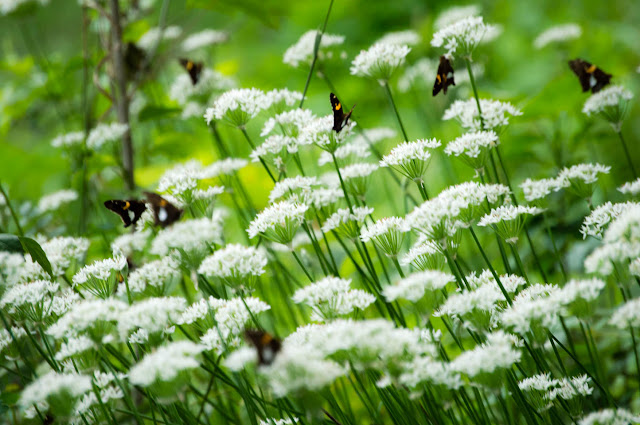Dead Nettle (Laminum purpureum)
There has a been a distinct lack of plant talk on this blog. Time to fix that. Like most of us, I am desperately waiting for spring to come. More so today, as I am looking over the 6 inches or so of snow we got yesterday. It is a very pretty snow, being the first wet, sticky snow we have had. All of the tress and such are encrusted with the snow. I'll try to get some photos of that later.
As I am longing for spring, I thought I would post about this cute little flower - the dead nettle (Lamium purpureum). Now if you are one of those people who worship in the cult of the lawn, and prefer the boring monoculture of a single grass species in a vain attempt to mimic a golf course, this plant is probably right up there for you with dandelions as a hated plant.*
But for me - I love this little plant. With it's cordate (heart-shaped) leaves and it's little lavender colored flowers that peak through the awnings created by the leaves. For those of us in the Midwest US, tt is one of the earlier blooming flowers in your yard, along with its sister henbit (Lamium amplexicaule). Henbit has darker green, rounder leaves with deeper purple flowers. Sometimes you will see, early in the spring, a crop field that is covered in purple. It is these guys that are responsible for that effect.
Both species are members of the Mint Family (Lamiaceae). Like all members of the mint family, they have zygomorphic flowers (i.e. bilateral symmetry), square stems, and opposite leaves. These two species are unusual in that they lack any strong odor like most members of the mint family. Many of our favorite herbs are in the mint family: oregano, basil, thyme marjarom, and of course peppermint, spearmint, chocolate mint, pineapple mint and all the other mints.
Below is a little montage of photos I took a couple of years ago of Dead Nettle.

* I have very strong opinions about the waste of resources (especially water) and the amount of poisons that are put into lawns to create something completely artificial. Is it really worth poisoning the environment to have a monoculture of grass? And why is it that the monoculture of grass is the ideal for a yard? Why do we have this cult of lawn in America?





Comments
Post a Comment